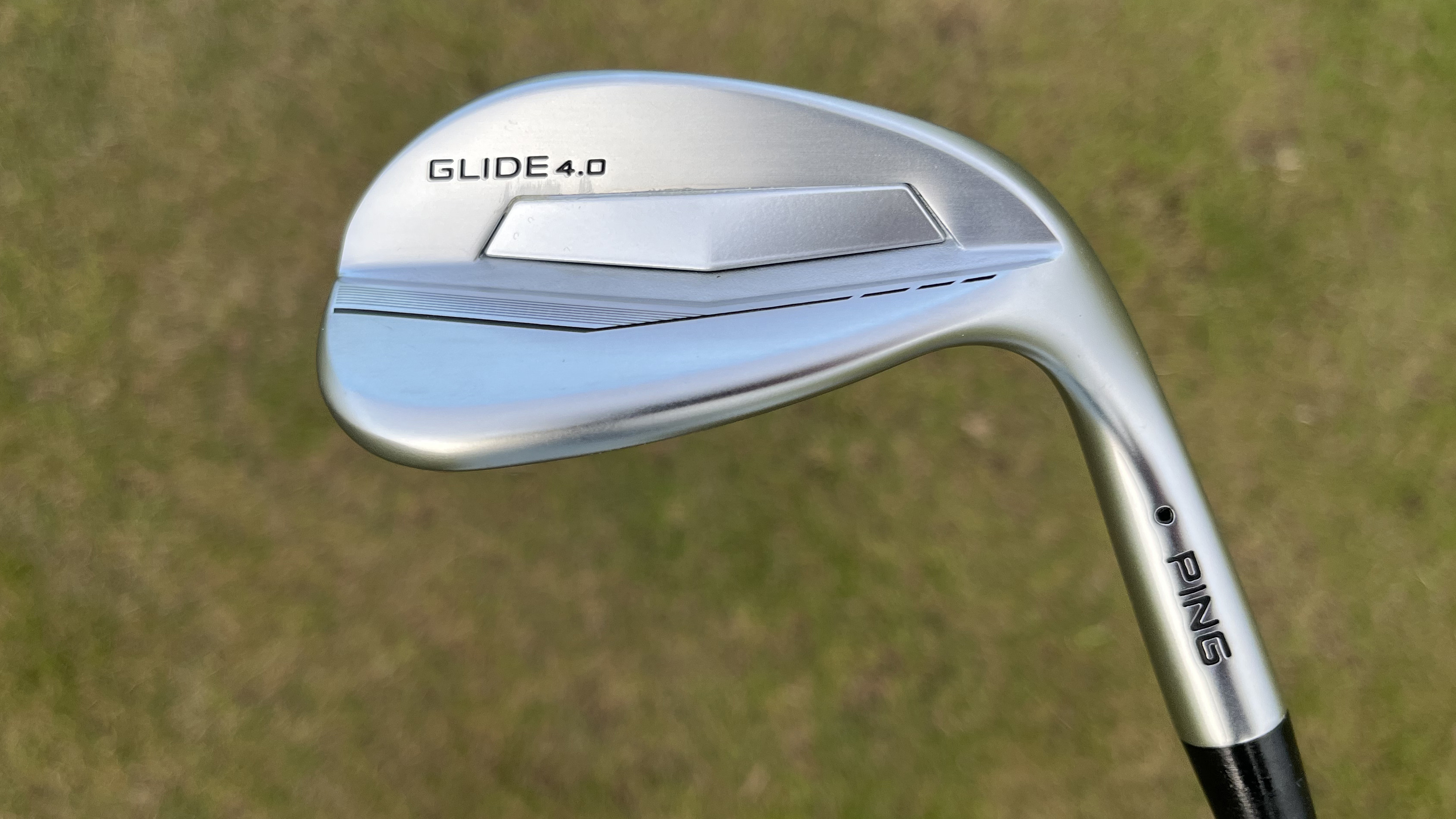Ping Glide 4.0 Wedge Review
We assess the performance on offer in this Ping Glide 4.0 wedge review


An excellent wedge that delivers high levels of spin and looks inviting behind the ball. With four different sole designs available, golfers can also tailor their wedge set-up to their specific needs and for those who struggle out of bunkers, the Eye2 option could well be a game-changer.
-
+
High levels of spin
-
+
Inviting address look
-
+
Eye2 sole profile a game-changer out the sand
-
-
Feel off the face a little firm
Why you can trust Golf Monthly

Ping Glide 4.0 Wedge Review
In to replace the popular Glide 3.0 and more than two years in the making, to say we were keen to put the new Ping Glide 4.0 wedge to the test would be an understatement. The first thing is that it looks exceptional - especially in the more traditional teardrop shape that is available in three of the four sole options. It also has the classic Ping Hydropearl 2.0 chrome finish, which reduces glare as well as flyers from the rough in damp conditions while also adding a touch of style to the aesthetics.
Watch: Most Forgiving Wedges 2024
This then translates into confidence over the ball. But the best wedges have to do more than just look good, especially considering golfers rely on them - the scoring clubs - more than any other in the bag. This is where the versatility of this range comes into its own.

The classic visual behind the ball inspires a lot of confidence
There are four sole options to choose from - WS, SS, TS and Eye2 - which I took advantage of. In the 50°, the versatile SS (standard sole) - which offers relief for golfers with a moderate angle of attack and would be a go-to option on various types of turf - performed really well on full shots and looks a little smaller than the prior version on the Glide 3.0. However, with my tendency to get a little steep, it wasn’t as consistent around the greens.
With that in mind, the WS (wide sole) is where I enjoyed the most success. In the 54°, the turf interaction was exceptional on short shots, making it one of the best wedges for chipping I've ever tested, and the larger profile gave me more confidence. The 14 degrees of bounce worked the kind of magic that was to be expected in softer conditions, but even when the ground was a little firmer, the strike remained crisp and consistent.
More impressive, however, was how easy it was to spin the golf ball. Fresh grooves are going to generate high levels of spin regardless but the amount on offer took me by surprise. Even when hitting shots that came off a little hotter and lower than expected, the ball sat to attention almost immediately, and quicker than most new wedges. This could well have been down to the new Emery face blast, which adds a little more friction to the hitting surface.

The new Ping Glide 4.0 wedge offers incredible amounts of spin
Finally, unique to Ping’s line-up is the Eye2 sole, which matches the original and iconic Eye2 profile. It’s available in lofts from 54°-60° and is described as the ultimate bunker club - a theory I put to the test. While impossible to definitively confirm the claim, it is undoubtedly one of the best sand wedges on the market due to its forgiveness from various lies and distances.
Subscribe to the Golf Monthly newsletter to stay up to date with all the latest tour news, equipment news, reviews, head-to-heads and buyer’s guides from our team of experienced experts.
What I found particularly impressive was the consistency on long-range shots. No matter how much speed I put into the swing, the strike was consistent and the interaction with the sand was really nice and shallow.

A look at the very different head shape of the Eye2 design
That being said, the feel off the face was a little firm. It improved over time as I got used to it and it was certainly stable and responsive, but it surprised me initially and some may prefer a softer feel from more of a blade-style design. It also meant I was missing some shots long before making the adjustment. The other thing is that the swing weight was on the heavy side. That’s not necessarily a bad thing however, as some people will prefer that attribute.
Also available is the TS (thin sole), which comes in lofts of 58° and 60°, and would be a brilliant lob wedge option for those with a shallow angle of attack and who are used to conditions more akin to links golf. As usual, Ping has thought of everything the golfer needs and included a longer 11.5-inch Lamkin grip to assist when choking down on partial wedge shots.

A lifelong golf fan, Andy graduated in 2019 with a degree in Sports Journalism and got his first role in the industry as the Instruction Editor for National Club Golfer. From there, he decided to go freelance and now covers a variety of topics for Golf Monthly.
Andy took up the game at the age of seven and even harboured ambitions of a career in the professional ranks for a spell. That didn’t pan out, but he still enjoys his weekend golf at Royal Troon and holds a scratch handicap. As a side note, he's made five holes-in-one and could quite possibly be Retief Goosen’s biggest fan.
As well as the above, some of Andy's work has featured on websites such as goal.com, dailyrecord.co.uk, and theopen.com.
What's in Andy's bag?
Driver: Callaway Mavrik Sub-Zero (9°)
3-wood: TaylorMade Stealth 2 Plus (15°)
Driving iron: Titleist U500 (17°)
Irons: Mizuno mp32 (4-PW)
Wedges: Titleist Vokey SM9 (50°, 54° and 58°)
Putter: Titleist Scotty Cameron Newport 2.5
Ball: TaylorMade TP5x